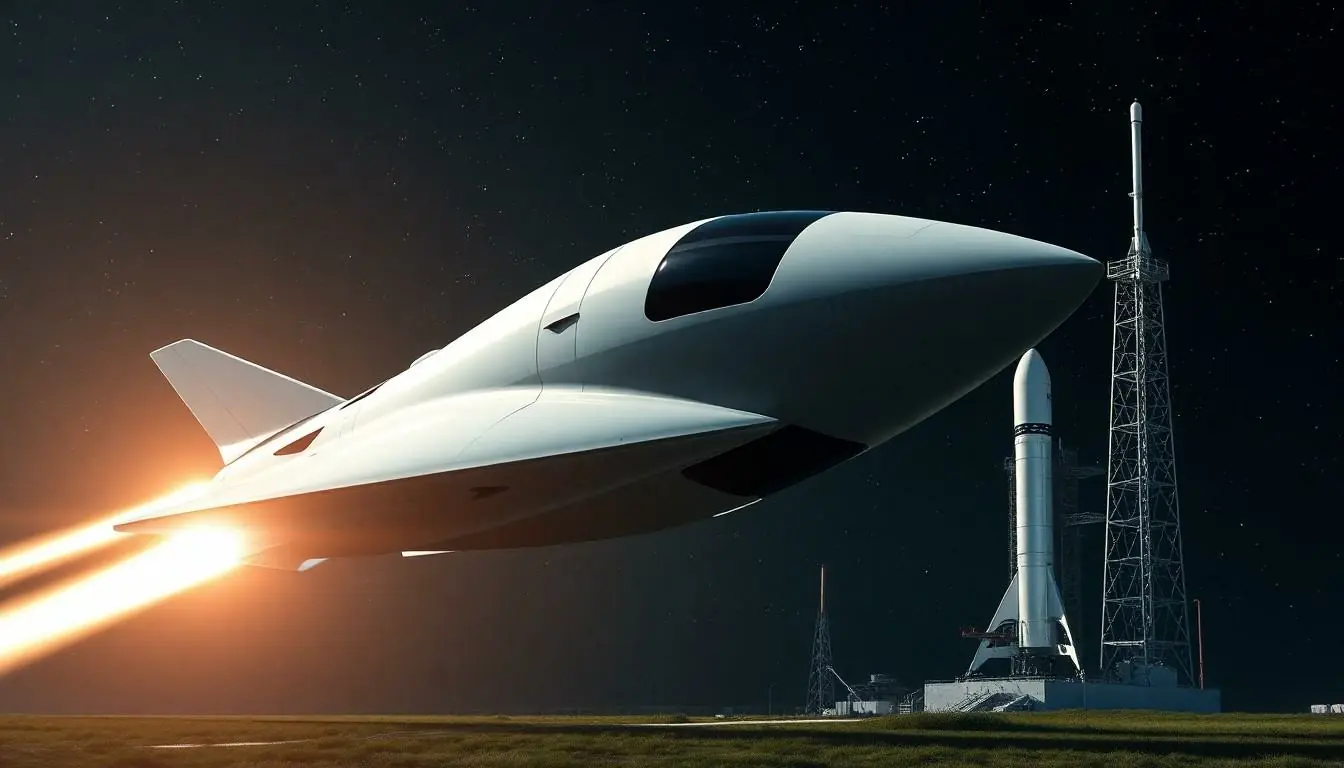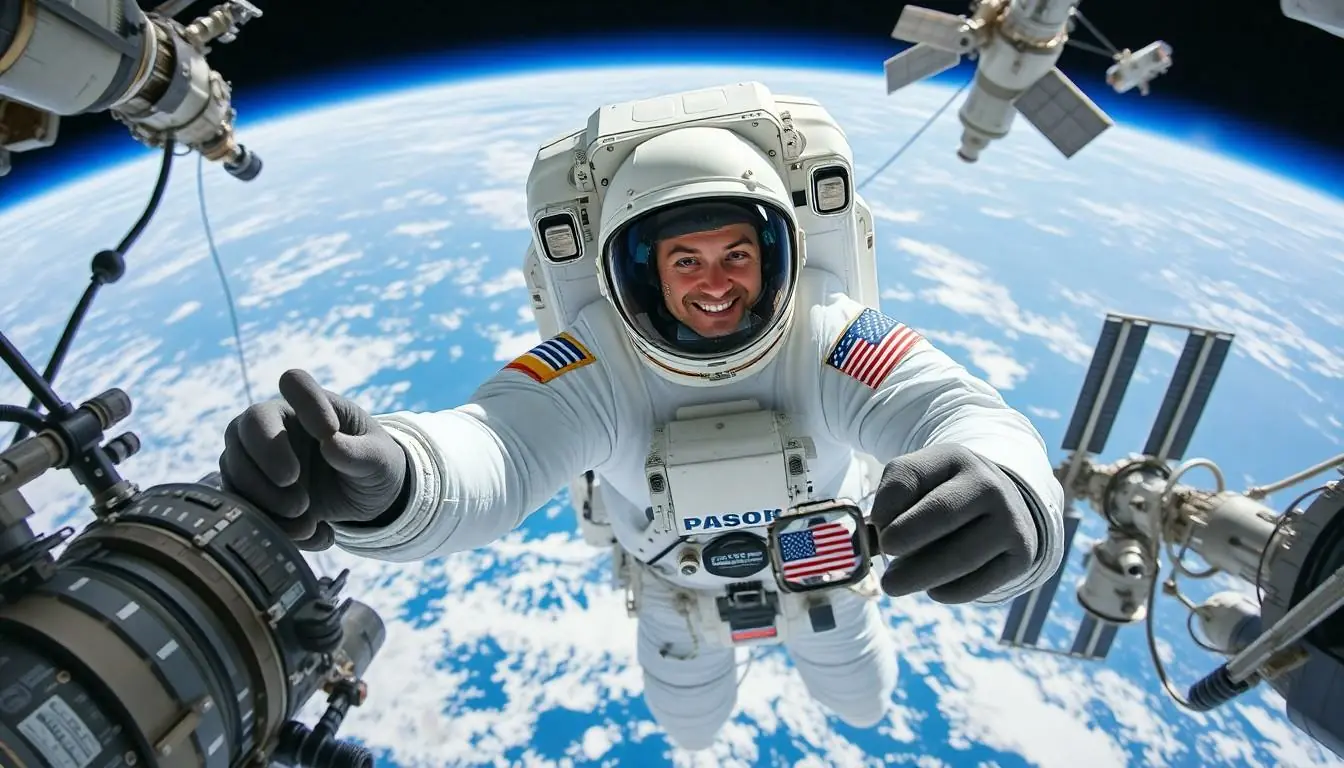When it comes to exploring the cosmos, technology is the rocket fuel that propels humanity beyond Earth’s atmosphere. From the sleek spacecraft that glide through the void to the high-tech gadgets that keep astronauts entertained during their long journeys, space tech is nothing short of mind-blowing. Imagine sending a selfie from Mars—thanks to cutting-edge cameras and communication systems, it’s not just a dream anymore.
Table of Contents
ToggleOverview of Technology Used in Space
Technology in space has transformed human exploration beyond Earth. Innovations such as spacecraft systems, life-support technologies, and communication equipment play crucial roles in missions.
Spacecraft are equipped with advanced propulsion systems, allowing precise maneuvering and orbital insertion. For instance, the Space Launch System (SLS) utilizes powerful engines to propel crewed missions to the Moon and Mars.
Life-support technologies ensure astronauts can survive prolonged missions in harsh environments. Environmental control systems recycle air and water, maintaining habitable conditions within spacecraft. Solar power systems provide energy for onboard operations, enhancing efficiency.
Communication is vital for mission success. State-of-the-art antennas and radio systems facilitate real-time data transmission between Earth and spacecraft. NASA’s Deep Space Network (DSN) consists of multiple ground stations that track missions across extensive distances.
Robotic technologies assist in exploration by conducting tasks too dangerous for humans. Rovers like the Perseverance on Mars perform analysis and gather data on the planet’s surface. Drones are also employed for aerial mapping and surveying.
Sensors and imaging systems significantly enhance our understanding of celestial bodies. High-resolution cameras capture stunning images, allowing scientists to analyze terrain and geological features. Spectrometers identify chemical compositions across various planets and moons.
Technology in space enables humanity to push the boundaries of exploration. From advanced spacecraft to life-support systems and cutting-edge communication tools, each advancement contributes to a greater understanding of the universe.
Types of Space Technology

Space technology encompasses various innovations that facilitate exploration and research beyond Earth. These advancements include satellite technology, spacecraft innovation, and launch technologies.
Satellite Technology
Satellites serve multiple purposes, including communication, weather monitoring, and Earth observation. Communication satellites enable global connectivity, supporting technologies like GPS and broadcasting. Weather satellites track atmospheric conditions and contribute to climate research. Earth observation satellites gather data critical for environmental monitoring and disaster management. These satellites rely on advanced sensors and imaging systems to provide high-resolution images and real-time data.
Spacecraft Innovation
Spacecraft designs continue to evolve, enhancing exploration capabilities. Crewed spacecraft, such as the SpaceX Crew Dragon, ensure astronaut safety during missions. Robotic spacecraft like Mars rovers conduct surface exploration, featuring sophisticated instruments that analyze soil and atmosphere. The use of advanced propulsion systems enables efficient travel between celestial bodies. Technologies that support life, including regenerative life-support systems, are essential for long-duration missions.
Launch Technologies
Launch technologies are vital for sending payloads into space. Rocket systems utilize powerful engines that generate necessary thrust to escape Earth’s gravity. Reusable rocket technology, exemplified by SpaceX’s Falcon 9, significantly reduces launch costs. Ground infrastructure plays a crucial role, with launch pads and control centers ensuring successful operations. Innovations in propulsion systems, such as liquid and solid fuels, enhance performance and reliability during ascent.
Applications of Space Technology
Space technology plays a crucial role in various fields, impacting daily life and global initiatives. Several applications showcase its versatility and significance.
Communication and Navigation
Innovative communication systems enable seamless data exchanges between Earth and space. Satellites facilitate global communications, allowing for telephone calls, internet access, and broadcast services. Notably, GPS satellites provide precise navigation information, enhancing travel and transportation. Additionally, advancements in communication equipment allow astronauts to send vital information in real-time, ensuring mission success and safety.
Earth Observation
Satellites equipped with advanced sensors monitor Earth’s climate and environment. High-resolution imaging systems capture crucial data, helping researchers analyze weather patterns and natural disasters. These observations support disaster management, agriculture, and urban planning. Furthermore, Earth observation technology aids in tracking deforestation and pollution levels, promoting environmental awareness and sustainable practices.
Space Exploration
Robotic technologies, such as rovers and landers, expand humanity’s understanding of celestial bodies. These systems conduct experiments and analyze soil and atmospheres on planets like Mars. Spacecraft equipped with advanced propulsion allow for precise maneuvering to explore distant destinations. Missions to asteroids and comets further enhance knowledge about the solar system’s formation and evolution, illustrating the importance of space exploration technologies.
Future Trends in Space Technology
Advancements in space technology continue to emerge, shaping the future of exploration and innovation.
Emerging Technologies
Artificial intelligence (AI) is revolutionizing data analysis in space missions. Quantum computing also enhances processing capabilities, allowing scientists to solve complex problems efficiently. Enhanced materials, such as graphene and lightweight composites, improve spacecraft durability and reduce launch costs. Additive manufacturing leads to on-demand production of components in space, minimizing the need for resupply missions. Innovations in propulsion technologies, like electric and ion thrusters, make deep-space travel more feasible. Autonomous systems for spacecraft navigation are rapidly progressing, allowing for real-time adjustments during missions.
Collaborative Efforts in Space Innovation
International partnerships play a significant role in advancing space technology. Agencies like NASA, ESA, and Roscosmos collaborate on projects that maximize resources and expertise. Joint missions, such as the Lunar Gateway, aim to establish sustainable human presence on the Moon. Public-private partnerships also drive innovation, as companies like SpaceX and Blue Origin work alongside government entities. Workshops and hackathons foster shared ideas among scientists and engineers, leading to groundbreaking solutions. Open-source platforms are enabling broader access to space data, encouraging global participation in exploration efforts.
Technology’s impact on space exploration is profound and far-reaching. It not only drives advancements in spacecraft and communication systems but also enhances the overall astronaut experience. As innovations continue to emerge, the collaboration between public and private sectors is set to accelerate progress.
The future of space exploration looks promising with the integration of AI and quantum computing. These technologies will likely redefine how humanity interacts with the cosmos. By fostering global partnerships and encouraging open access to data, the journey to uncovering the universe’s secrets is more inclusive than ever. As technology evolves, so does the potential for groundbreaking discoveries that could change life on Earth and beyond.

